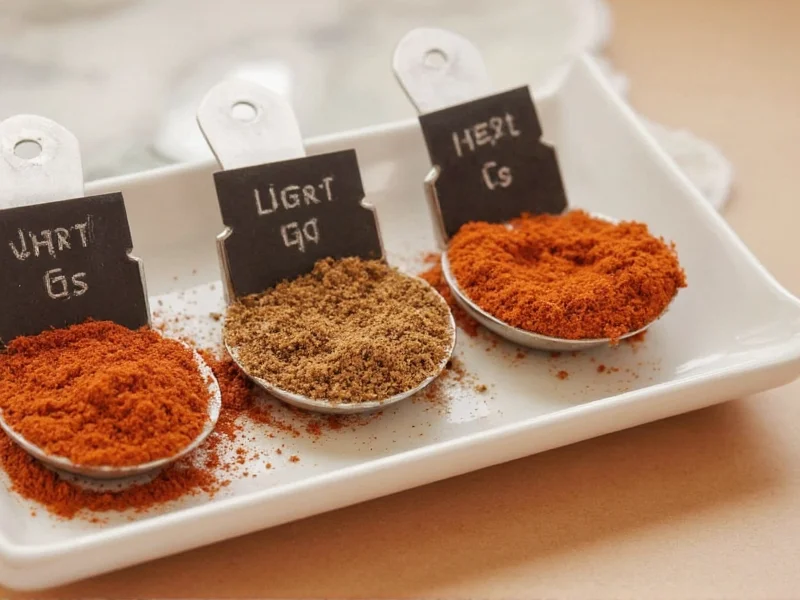Understanding spice expiration dates is crucial for home cooks who want to minimize waste while maintaining culinary quality. Unlike perishable foods, dried spices don't harbor harmful bacteria when stored correctly. The dates printed on spice containers typically represent best by indicators, not safety cutoffs. This distinction matters significantly when deciding whether to keep or discard spices found in your pantry.
Decoding Spice Date Labels
Most spice containers display one of three date types:
- Best by - Peak flavor period (most common for spices)
- Use by - Recommended consumption timeframe
- Expiration - Rare for shelf-stable spices
Food safety experts confirm that is it safe to use expired spices depends on storage conditions rather than calendar dates. The USDA states that properly stored dried spices remain safe indefinitely, though their quality diminishes. This explains why can old spices make you sick is rarely a valid concern for properly stored spices.
How Spices Degrade Over Time
Spices lose quality through three primary mechanisms:
- Volatility loss - Essential oils evaporate, reducing aromatic compounds
- Color fading - Light exposure breaks down pigments like curcumin in turmeric
- Moisture absorption - Humidity causes clumping and flavor dilution
The rate of degradation depends significantly on storage conditions. Spices kept in clear containers near stoves lose potency 3-4 times faster than those stored in dark, airtight containers away from heat sources. This explains why how long do spices last after expiration date varies so dramatically between households.
Practical Assessment Methods
Before using spices past their printed date, conduct these simple tests:
The Smell Test
Crush a small amount between your fingers and inhale deeply. Fresh spices should produce an immediate, strong aroma. If you need to bury your nose in the container to detect any scent, the spice has lost significant potency. This how to tell if spices are still good method works for most dried herbs and spices.
The Color Check
Brightly colored spices like paprika, turmeric, and saffron noticeably fade as they age. Compare against a fresh sample if available. Significant color loss indicates diminished flavor compounds.
The Taste Test
For ground spices, place a tiny amount on your tongue. Fresh spices deliver immediate, complex flavor. Aged spices taste flat or one-dimensional. Remember that does ground cinnamon expire in terms of safety? No—but its warming complexity diminishes considerably after 2-3 years.
| Spice Type | Whole Form Shelf Life | Ground Form Shelf Life | Peak Flavor Period |
|---|---|---|---|
| Cinnamon | 4 years | 2-3 years | 18-24 months |
| Cumin | 4 years | 2-3 years | 12-18 months |
| Paprika | 3 years | 1-2 years | 12 months |
| Black Pepper | 5+ years | 2-3 years | 24+ months |
| Cloves | 4 years | 2 years | 18 months |
| Nutmeg | 3 years | 1 year | 12 months |
Optimal Spice Storage Practices
Maximize your spices' shelf life with these evidence-based storage techniques:
- Use airtight containers - Glass jars with tight seals prevent moisture absorption better than plastic
- Avoid heat sources - Keep spices at least 3 feet from stoves, ovens, and dishwashers
- Block light exposure - Store in dark cabinets or use opaque containers (clear jars reduce shelf life by 50%)
- Maintain stable temperatures - Fluctuations accelerate flavor loss
- Never store above the stove - Heat and steam dramatically shorten spice shelf life chart expectations
For maximum longevity, consider freezing whole spices in vacuum-sealed bags. This technique preserves volatile compounds for 5+ years. The best way to store spices for longevity involves combining proper containers with ideal environmental conditions.
When to Discard Spices
While spices rarely become unsafe, discard them immediately if you notice:
- Mold growth (extremely rare with properly stored dry spices)
- Visible moisture or clumping that doesn't break apart
- Musty or sour odors (indicates moisture contamination)
- Insect infestation
Remember that whole spices vs ground spices shelf life differs significantly. Whole spices like peppercorns, cinnamon sticks, and nutmeg maintain potency much longer than their ground counterparts. Grinding exposes more surface area to air, accelerating degradation.
Reviving Old Spices
Before discarding aged spices, try these restoration techniques:
- Dry toast - Briefly heat whole spices in a dry skillet to release trapped oils
- Grind fresh - Use a dedicated spice grinder for older whole spices
- Increase quantity - Use 25-50% more aged spices in recipes
- Combine with fresh - Blend older spices with fresher batches
These methods won't restore spices to their original potency but can extend their useful life. For critical dishes where flavor precision matters, investing in fresh spices remains the superior choice.











 浙公网安备
33010002000092号
浙公网安备
33010002000092号 浙B2-20120091-4
浙B2-20120091-4